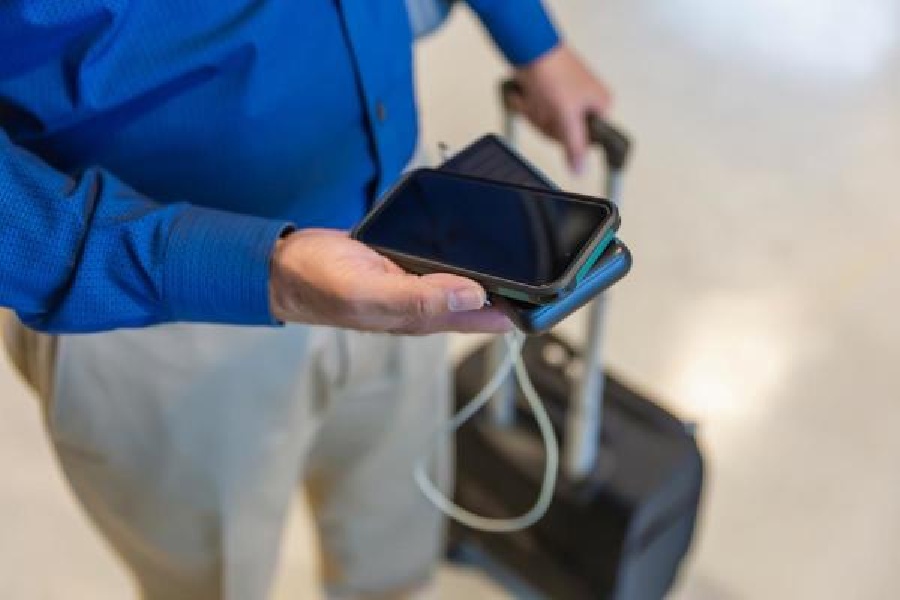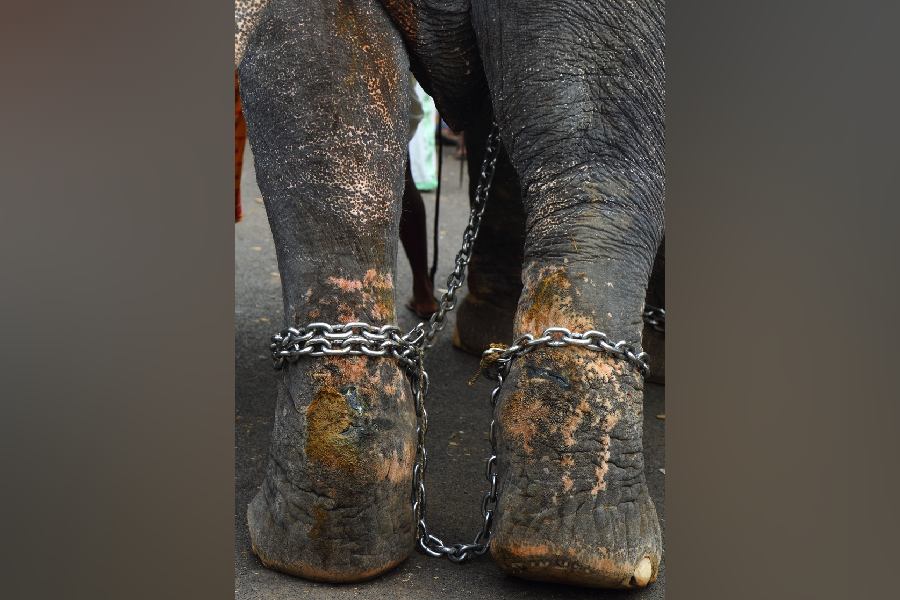 |
| A Jabala girl in yellow jersey gives the Calcutta Police team a fight. Picture by Amit Dutta |
Shehnaz Khatoon, Jyotsna Khatoon and Shefali Khatoon are all between 12 and 14 years. They are from Murshidabad villages and love playing football. On Friday, the girls were part of a team that played its first exhibition match against the Calcutta Police women’s team.
Shehnaz’s team lost by one goal, but not before it fought the police team with all its might. All members of Shehnaz’s team have either survived trafficking or have been victims of domestic violence. The girls, mostly belonging to minority communities, have been rescued by a non-governmental body, Jabala Action Research Organisation, which has introduced football as therapy since 2006. It has worked wonderfully.
“We may have lost by a goal today but we enjoyed every moment of it. We love to fight tooth and nail on the field,” adds Shehnaz, who, like Jyotsna and Shefali, wants to play professional football one day.
There’s no feeling like kicking the ball high in the air. It makes you feel you can hit back. It makes you get over a lot.
“Now we have over 300 girls in our football squad. Many of them live in our Rejinagar shelter or hail from trafficking-prone areas like Hariharpara, Jalangi and Beldanga in Murshidabad,” said Baitali Ganguly, the executive director of the NGO. “Some are also from slums in Calcutta. Many of them are poorly fed but their enthusiasm for the beautiful game is infectious. Football gives them the confidence to fight back against injustice,” she added.
Football also helps these girls find a better way to live. Ten of the rescued girls have already started playing professional football at various state levels.
“Some of these girls have worked as sex workers. Their minds are in turmoil. Football helps them express themselves and also search for a new goal in life. Just vocational training won’t do for them,” said film-maker Ananya Chaterjee, who filmed the match for her documentary on rehabilitation of trafficked girls.
The survivors under Jabala have also been running the police canteen at Lalbazar as well as the one at the police hospital in Bhowanipore.
The magic of thetar
 |
| A scene from Kinu Kaharer Thetar |
Kinu Kaharer Thetar directed by Kumar Roy premiered on May 2 1988. It was an “instant hit” and even today Bohurupee is “swamped with requests for a revival”, says Tarapada Mukherjee, who had played the lead of Kinu. So Kinu Kaharer Thetar will open the Bohurupee theatre festival, a retrospective of Kumar Roy plays from November 24-27. While Kinu, written by Manoj Mitra, will be staged at Academy of Fine Arts at 6.30 followed by Kaalsandhya and Phulloketur Pala on the following days. Deepdanda will be held at Rabindra Sadan and Mister Kakatua at BD Auditorium, Bidhan Nagar.
More than two decades later Kinu Kaharer Thetar remains as magical. The play, which Mitra had based on a real-life character, is a celebration of theatre itself complete with its magical attraction, its ability to touch lives and survive in the face of all opposition. It also reminds viewers that some of the ideas put forward by the likes of Stanislavski and Brecht were already a part of our homegrown rustic “thetar” which we have neglected. How Kinu Kahar, a poor, uneducated youth living on the outskirts of a tiny village in Bengal became such a theatre addict is not known, but each night he would transform into a “motion master”, short for playwright, director, actor and manager of a small troupe that included his wife Jagadamba.
The “thetar” allowed Kinu satiric jabs at anything and everything. He would just say it was tomfoolery, but it made many uncomfortable.
“So it was that his Ghantakarna Pala could never be performed to the end. Authorities from some field or the other would always force the play to a stop. Playing both roles of Kinu and Ghantakarna is a challenge for any actor,” says Mukherjee, now 76.
Shopping at signals
 |
Too many signals and too much traffic seems to have provided on-the-go Calcuttans with a new lifestyle choice: “Shop while you stop.”
First, there were the strawberries, then the weird glow horns, Bokomas and party hats, along with the traditional feather dusters and dishcloths. But now street corners and major junctions across the city have become drive-in mini sabzi mandis.
Next time you pass the Park Street crossing or the Chowringee junction, roll down your windows and take a good look. No sooner does the traffic light change to red, than many homegoers swiftly bring out their cash bag. Vendors rush towards the cars with their booty of cauliflower and babycorn, a swift transaction takes place and the multi-tasking homemaker’s shobji bajaar is done. On a good day, you may get fruits too. We are hoping to see potatoes, tomatoes and green chillis at signals soon.










